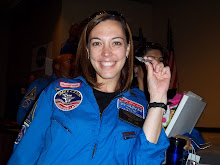I have been exploring the website of Partnership for 21st Century Skills at www.21stcenturyskills.org. I agree with the mission of the organization, which is to bridge schools, community, and government together in order to help students master 21st century skills that they will need in order to be successful in the future workforce. There is a variety of resource material available for teachers to sort through on the site, by content area, state standards (although limited to 11 states), assessment, and professional development, to name a few. I was able to sift through some of the resources on the site and found it to be a somewhat confusing layout. I am not sure teachers would have a lot of time to muddle through all of the resources to find something useful. I did appreciate the ability to search resources by ratings and editors pick and by title, but still found it difficult to get to good ‘meat.’ The foundational information for each state represented was reflected what was stated in the P21 mission. Unfortunately I became frustrated with the site, as it often prevented me from using the back browser and I had to restart the website in order to explore more. What was surprising about the site was the volume of ‘big names’ listed as members of the council, including, but not limited to Pearson, Intel, Adobe, Blackboard, Corporation for Public Broadcasting, Dell, Ford, Hewlett Packard, Lego, McGraw-Hill, Microsoft, NEA, Scholastic Education, Sesame Street, Verizon, and Walt Disney. I felt like some of the statements made on the site were too absolute. For instance the ‘Mission of the High School’ on one of the state links indicated that high-performing high schools were those that, essentially, understood the needs of high school students and were able to meet those needs better than other schools. I think it is important to remember that some schools have more “fortunate kids” than others, and, therefore, more access to technology and resources than schools that have a heavier population of “deprived kids.” It is not fair to make such absolute statements when not taking into account the demographics of schools, as well as the economic situation of school systems. Having said that, I wholeheartedly believe that teachers today have a responsibility to their students to do what they can to prepare them with the skills necessary to be successful in the 21st century workforce. This means closing the gap between schools and within schools and providing meaningful opportunities for all students to be successful. I know that the way I must teach today is not what I remember thinking teaching would be like when I was a little girl. I have only started my ninth year teaching, but things are still very different in my middle school as an educator than my middle school as a student. I must go with the changing times and do what I can to support my students and help them become tomorrow’s leaders. If this means learning new things that might make me a little uncomfortable now in order to provide them with opportunities that will help them be successful, then so be it. It is, after all, the goal of an educator…to do all that can be done for the greater good of our students!
Wednesday, September 30, 2009
Wednesday, September 16, 2009
What good is a blog to the classroom?
Blogs are great spaces for teachers to provide opportunities for students to reflect on topics that have been covered in class. I teach 8th grade science and see blogs as a way for students to think critically about experiments carried out in class, errors that may have occurred, ways to improve techniques, and then to analyze data collected.
Students in one of my classes are limited to the number of students in the room at that time. However, a blog would allow students in all five of my classes to interact with each other. This would allow for students to be exposed to more ideas than they would in a traditional class discussion.
In addition, students could use a blog to continually reform, reshape, and expand upon their ideas as they would be able to reflect back on their work over the course of the school year. This is a perfect way to illustrate the “nature of science” for students, which is an overarching theme in my science content area!
Students in one of my classes are limited to the number of students in the room at that time. However, a blog would allow students in all five of my classes to interact with each other. This would allow for students to be exposed to more ideas than they would in a traditional class discussion.
In addition, students could use a blog to continually reform, reshape, and expand upon their ideas as they would be able to reflect back on their work over the course of the school year. This is a perfect way to illustrate the “nature of science” for students, which is an overarching theme in my science content area!
Subscribe to:
Comments (Atom)




